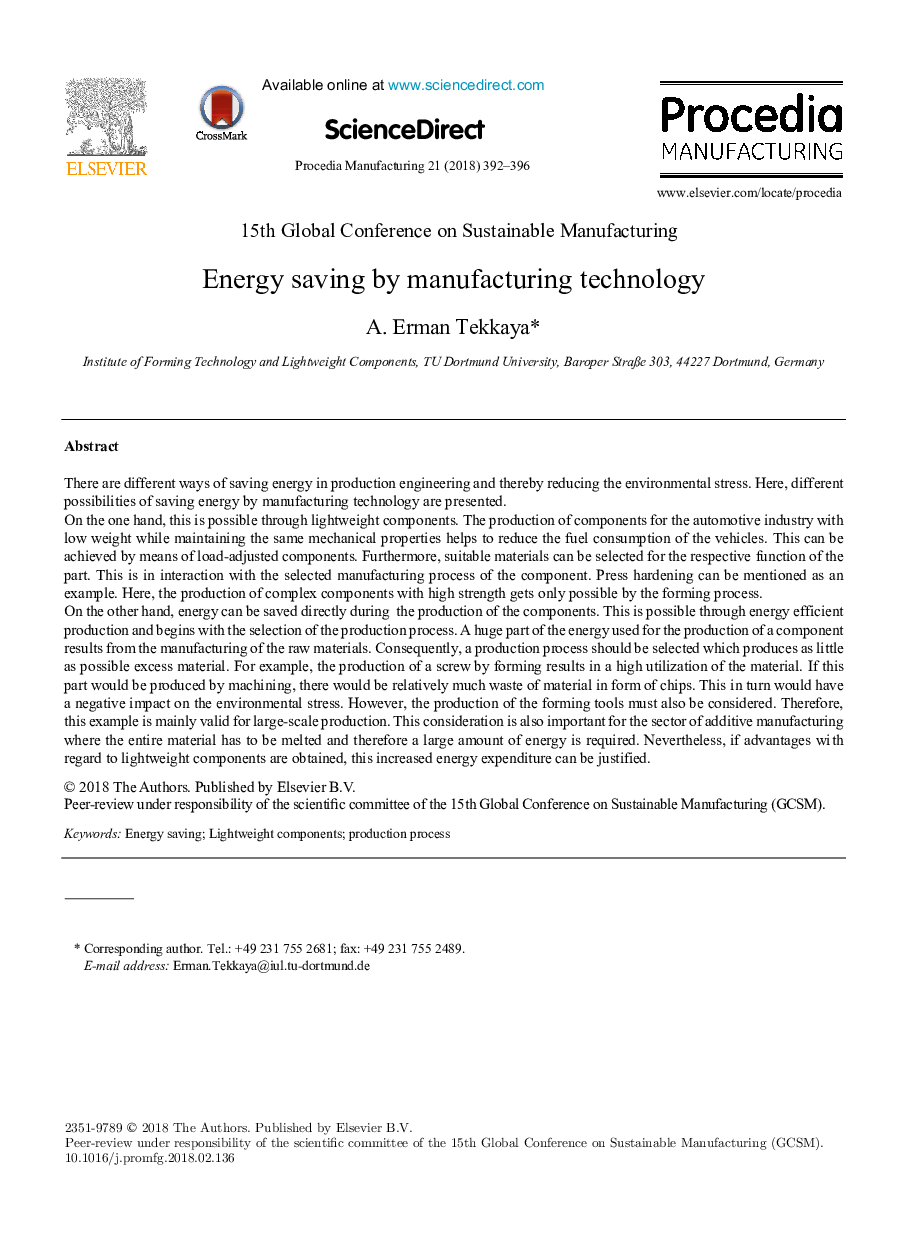| کد مقاله | کد نشریه | سال انتشار | مقاله انگلیسی | نسخه تمام متن |
|---|---|---|---|---|
| 7545225 | 1489594 | 2018 | 5 صفحه PDF | دانلود رایگان |
عنوان انگلیسی مقاله ISI
Energy saving by manufacturing technology
ترجمه فارسی عنوان
صرفه جویی در انرژی با تکنولوژی تولید
دانلود مقاله + سفارش ترجمه
دانلود مقاله ISI انگلیسی
رایگان برای ایرانیان
کلمات کلیدی
ذخیره انرژی، اجزای سبک وزن، فرایند تولید،
ترجمه چکیده
از سوی دیگر، انرژی می تواند به طور مستقیم در تولید اجزاء ذخیره شود. این امر از طریق تولید کارآمد انرژی امکان پذیر است و با انتخاب فرایند تولید شروع می شود. بخش بزرگی از انرژی مورد استفاده برای تولید یک جزء حاصل از تولید مواد خام است. درنتیجه، یک فرایند تولید باید انتخاب شود که به عنوان مواد مضاعف ممکن تولید می کند. به عنوان مثال، تولید یک پیچ توسط تشکیل نتایج در استفاده بالا از مواد. اگر این بخش توسط ماشینکاری تولید شود، مواد زائد نسبتا زیادی به شکل تراشه وجود خواهد داشت. این به نوبه خود تاثیر منفی بر استرس زیست محیطی دارد. با این حال، تولید ابزارهای تشکیل باید نیز در نظر گرفته شود. بنابراین، این مثال به طور عمده برای تولید در مقیاس بزرگ معتبر است. این توجه نیز برای بخش تولید افزودنی مهم است که تمام مواد باید ذوب شود و بنابراین مقدار زیادی از انرژی مورد نیاز است. با این وجود، اگر مزایای مربوط به اجزای سبک وزن به دست می آید، این افزایش هزینه های انرژی را می توان توجیه کرد.
موضوعات مرتبط
مهندسی و علوم پایه
سایر رشته های مهندسی
مهندسی صنعتی و تولید
چکیده انگلیسی
On the other hand, energy can be saved directly during the production of the components. This is possible through energy efficient production and begins with the selection of the production process. A huge part of the energy used for the production of a component results from the manufacturing of the raw materials. Consequently, a production process should be selected which produces as little as possible excess material. For example, the production of a screw by forming results in a high utilization of the material. If this part would be produced by machining, there would be relatively much waste of material in form of chips. This in turn would have a negative impact on the environmental stress. However, the production of the forming tools must also be considered. Therefore, this example is mainly valid for large-scale production. This consideration is also important for the sector of additive manufacturing where the entire material has to be melted and therefore a large amount of energy is required. Nevertheless, if advantages with regard to lightweight components are obtained, this increased energy expenditure can be justified.
ناشر
Database: Elsevier - ScienceDirect (ساینس دایرکت)
Journal: Procedia Manufacturing - Volume 21, 2018, Pages 392-396
Journal: Procedia Manufacturing - Volume 21, 2018, Pages 392-396
نویسندگان
A. Erman Tekkaya,
